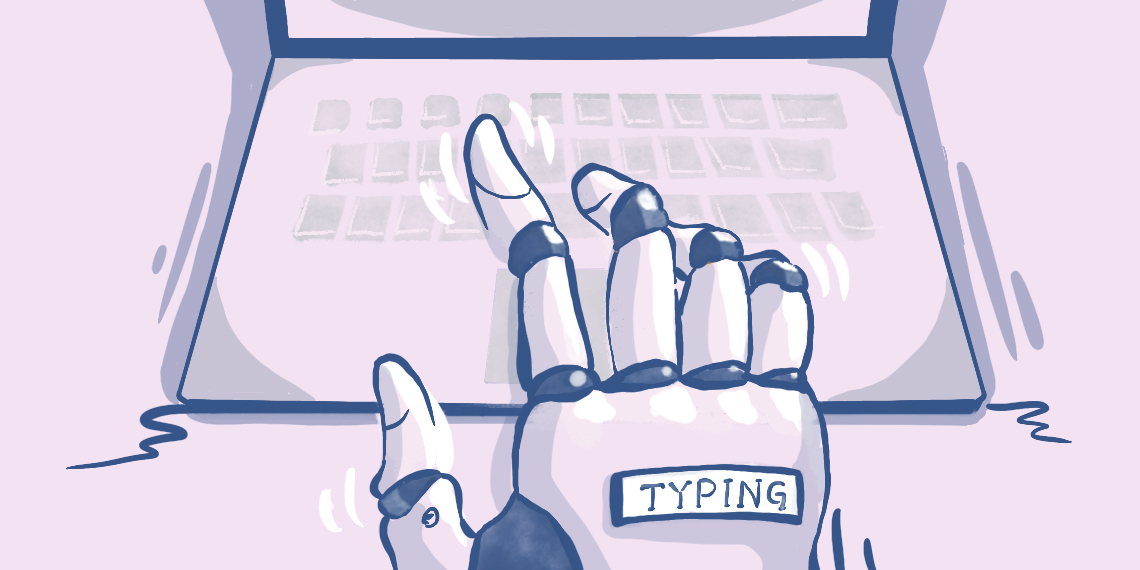Why employers need to fine-tune their collaboration, productivity tech stacks

How we collaborate at work has gone through numerous iterations.
Before 2020, asynchronous work was rare. Most people hadn’t even heard the term at that point. Today, it’s become a daily habit for most desk-based workers, whether they’re in the office or not.
In a nutshell, synchronous means when people work together in “real-time” versus asynchronous, which means working independently but coordinating over time. But with hybrid models now embedded, and workforces more dispersed than ever, companies are looking hard at what blend leads to the most effective collaboration and higher productivity. And that all comes down to using the right mix of workplace technology.
Asana’s Work Innovation Lab has studied work patterns from 2020 to the present, revealing shifts between these different methods of working. “We wanted to better understand synchronicity and asynchronicity, and we were hearing from our customers in terms of wanting best practices and how they should think about this,” said Dr. Rebecca Hinds, head of The Work Innovation Lab. “How do they start to think about creating a work culture and work environment that is conducive to asynchronous work?”
Work patterns change over time
There was a lot of upside to the explosion of virtual meetings when everyone was forced to work remotely in 2020. Without the logistical time constraints of getting to and from meetings, people found they could pack more video meetings into their day. And it meant they could still connect with others verbally and visually in real time — aka synchronous working. Productivity and time efficiency seemed to skyrocket.
But although meeting overload has always been problematic in many industries, this jump in the number of virtual meetings an average person could fit into their day started to cause a major problem between 2020 and 2021, with many complaints about meeting overload beginning, according to Hinds.
That led to a pushback on so-called heavy meetings culture and a notable shift in asynchronous work — where people would communicate with each other, or work on joint projects at different times, via shared documents and other tools. Companies adopted new practices like flexible hours, focus blocks and “no meeting” days.
After 2022, people rebounded toward synchronous work, surpassing levels seen at the start of the pandemic.
It’s the companies that have found a way to leverage the right workplace tech to enable their employees to use both synchronous and asynchronous methods at will, for whatever best suits specific work, that are recording higher operational efficiency and also gaining a competitive edge in talent attraction and retention, according to Asana’s report.
“From a data perspective, it looks quite similar in terms of the average time of a given workday that workers are working synchronously and asynchronously,” said Hinds. “But we definitely see that asynchronous work is a core part of almost every remote-first company, and in hybrid work.”
Freelancing platform Upwork has gotten more comfortable with asynchronous work thanks to equipping its workforce with the right technology.
“As a result, we’re more frequently managing multiple projects and tasks at the same time: you can move Project A forward, then switch focus to Project B while you wait for input and feedback,” said JJ Reeder, director of remote organizational effectiveness at Upwork. “There’s a lot more support for work-life harmony and personal flexibility.”
Reeder said that finding time is an ongoing challenge, but being able to work asynchronously has helped sustain collaboration. She admitted, though, that it’s not a perfect formula. “We still rely on meetings and struggle with project management and effective communication,” said Reeder.
She said she hopes to lean into transparency, letting employees know it’s OK to share what they’re working on, even before it’s finished.
“We are indexing too hard on the perfectionistic, people-pleasing mentality of pre-pandemic work, and that undercuts our ability to collaborate in a distributed dynamic,” said Reeder.
The importance of a solid tech stack
How technology is used to improve collaboration and work productivity matters more than ever, with hybrid models embedded for the foreseeable future.
Forty percent of companies in the U.S. have implemented digital collaboration tools as a step to enabling hybrid work, according to data from Lucid Software, which provides visual collaboration tools for businesses. And yet, 57% of workers said that collaboration tools work better when they’re in the office.
That’s why a company’s tech stack matters. But it can be hard to figure out exactly what a company’s employee and workflow tech stack should look like. Reeder advised not to waste time on a shiny new tool if it doesn’t work with your existing stack.
“Establish your cornerstones and then insist that any new tools must work with those key players,” said Reeder.
But it’s easy to get trapped in app sprawl. The average employee switches between over 35 job-critical apps over 1,100 times daily, according to workflow automation company Pega.
“That hectic introduction of new technology came with a cost,” said Alexey Korotich, vp of product at collaborative work management platform Wrike. “Companies started to face an ‘app sprawl’ problem. Without a single source of truth, organizations struggled to stay aligned on priorities and were not reaching efficiency in their core business processes.”
App sprawl contributes to poor employee experiences. According to Wrike, 70% of employees reported feeling stressed having to juggle multiple applications. And Korotich said that with the boom of generative AI, many companies face the possibility of another app sprawl.
Educating employees on using what technology when
Just having the right technology isn’t enough. Employees need to be brought up to speed on how best to use that technology to enhance their collaboration and productivity. Otherwise they can end up being counterproductive.
“For those companies that have transitioned effectively to asynchronous work, they’ve done something beyond just implementing new technology to enable it, so they’ve really created more of a written culture versus a spoken culture,” said Hinds. “They’ve advised their employees on how to think about asynchronous technologies versus synchronous technologies.”
The more you can have a central “source of truth” through a written culture, the more you can enable effective collaboration, stressed Hinds. She pointed to Google Drive and Dropbox as examples. “If you’re not helping your employees know what work to do where, how to think about the different technologies, or leaving it to them to make those different judgment calls, there’s going to be information in different siloed parts of the business, and communication and collaboration are going to be hindered.”
According to Slack, 43% of desk workers have received no guidance on how to use technology like AI. As the workplace continues to evolve, the tools we use to collaborate and get work done will take precedence over when and where we work.
The constant app switching at work is becoming a problem. “This overwhelming context switching disrupts workflow and hinders productive collaboration,” said Christina Janzer, svp of research & analytics at Slack. “At Slack, we’ve seen that our customers need deliberate, focused tech stacks that encourage collaboration instead of distraction.”
Some of that might be best decided at the team level. Providing clarification for how work will happen can unlock your team to designing itself around what works and avoid what doesn’t, said Janzer.
“Encourage teams to create team-level agreements, which can provide a mechanism to align on how teams will work together,” said Janzer. “You can include aspects such as what tools will be used for which task, when the team will be available for synchronous collaboration, what meetings are for, when people should feel free to turn off notifications for heads-down work, how decisions are made and so on.”


